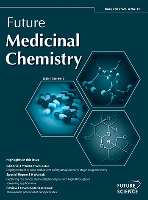
Future Medicinal Chemistry
Scope & Guideline
Elevating the discourse in drug discovery and pharmacology.
Introduction
Aims and Scopes
- Drug Design and Synthesis:
The journal emphasizes the design and synthesis of novel compounds, exploring their potential therapeutic applications in various diseases, particularly cancer, infectious diseases, and neurodegenerative disorders. - Biological Evaluation:
Future Medicinal Chemistry covers studies that evaluate the biological activity of synthesized compounds, including in vitro and in vivo assessments, to determine their efficacy and safety. - Computational Chemistry and Molecular Modeling:
The journal promotes the use of computational methods and molecular modeling techniques to predict the behavior of drug candidates, optimize their structures, and understand their mechanisms of action. - Target Identification and Mechanism of Action:
Research articles often focus on identifying biological targets for new drugs and elucidating the mechanisms by which these compounds exert their effects, contributing to the understanding of drug action. - Emerging Therapeutic Strategies:
The journal highlights innovative therapeutic strategies, including targeted therapies, combination therapies, and the application of artificial intelligence in drug discovery. - Addressing Antimicrobial Resistance:
Future Medicinal Chemistry publishes research aimed at developing new antimicrobial agents and strategies to combat drug-resistant pathogens, reflecting an urgent need in public health.
Trending and Emerging
- Targeted Protein Degradation:
The rise of proteolysis-targeting chimeras (PROTACs) and similar strategies indicates a growing interest in targeted protein degradation as a novel therapeutic approach to tackle previously undruggable targets. - Artificial Intelligence in Drug Discovery:
The incorporation of artificial intelligence and machine learning techniques in drug design and discovery processes is rapidly gaining attention, facilitating more efficient identification of potential drug candidates. - Combination Therapies:
There is an increasing focus on combination therapies that synergistically enhance therapeutic efficacy and reduce resistance, particularly in cancer and infectious disease treatments. - Synthetic Biology and Bioinformatics:
The integration of synthetic biology and bioinformatics in the design and optimization of drug candidates is emerging as a significant trend, enhancing the precision of drug development. - Nanomedicine and Drug Delivery Systems:
Research on nanomedicine and advanced drug delivery systems is expanding, particularly in the context of improving bioavailability and targeting specific tissues or cells for therapeutic interventions. - Immunotherapy and Personalized Medicine:
The journal is increasingly publishing articles related to immunotherapy and personalized medicine, reflecting a shift towards treatments tailored to individual patient profiles and disease mechanisms.
Declining or Waning
- Traditional Natural Product Chemistry:
There has been a noticeable decrease in publications focused solely on traditional natural product chemistry, as the field shifts towards more synthesized and modified compounds that offer improved efficacy. - Basic Pharmacology Studies:
Research that primarily focuses on basic pharmacological studies without the integration of medicinal chemistry perspectives appears to be waning, as there is a greater emphasis on translational research and drug development. - Single-target Drug Discovery:
The trend is moving away from single-target drug discovery approaches towards more complex, multi-target strategies, which are believed to offer better therapeutic outcomes. - Chemical Libraries and High-Throughput Screening:
Research centered around the screening of large chemical libraries for lead compounds has seen a decline, as more sophisticated computational approaches and targeted methodologies gain traction. - Focus on Traditional Anticancer Agents:
The interest in traditional anticancer agents is decreasing in favor of novel approaches, such as immunotherapy and targeted therapies, which are being prioritized in recent studies.
Similar Journals

Heterocyclic Letters
Connecting Researchers Through Cutting-edge Heterocyclic InsightsHeterocyclic Letters is an esteemed journal in the field of synthetic organic chemistry, published by RAMAN PUBL. With ISSN 2231-3087 and E-ISSN 2230-9632, this journal aims to disseminate original research and innovative findings related to heterocyclic compounds, which play a crucial role in medicinal chemistry, material science, and agricultural chemistry. Heterocyclic Letters provides a platform for researchers, professionals, and students to share their insights and advancements, thus fostering academic collaboration and knowledge transfer. The journal is dedicated to maintaining high-quality standards in research publication, making it an essential resource for anyone focused on the latest developments in heterocyclic chemistry. Although it does not currently offer Open Access options, the journal’s rigorous peer-review process ensures that only the most credible and impactful studies are published, contributing significantly to the advancement of the field.

MOLECULAR DIVERSITY
Connecting Chemistry, Biology, and Pharmacology for a Better TomorrowMOLECULAR DIVERSITY, published by Springer, stands as a pivotal platform within the fields of chemistry, biology, and pharmacology since its inception in 1995. This esteemed journal aims to foster interdisciplinary research and innovation, particularly in areas such as catalysis, drug discovery, inorganic and organic chemistry, and molecular biology. With a diverse scope that reflects contemporary scientific challenges, it has been recognized for its significant contributions, boasting commendable Scopus rankings and an impact factor that underscores its relevance in critical fields. Although not an open access journal, MOLECULAR DIVERSITY continues to influence and engage researchers, professionals, and students alike by providing a forum for high-quality peer-reviewed articles and cutting-edge research findings. As it converges years of scientific dynamism from 1995 to 2024, this journal remains vital for those advancing the frontiers of molecular science and engineering.
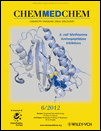
ChemMedChem
Innovating drug discovery through interdisciplinary collaboration.ChemMedChem is a leading international journal published by WILEY-V C H VERLAG GMBH in the United Kingdom, specializing in the interdisciplinary fields of medicinal chemistry and drug discovery. With a commendable impact factor that places it in the Q1 quartile for Organic Chemistry and among the Q2 ranks in several other key categories including Biochemistry, Molecular Medicine, and Pharmacology, ChemMedChem serves as a vital platform for the dissemination of innovative research and transformative insights in the development of pharmaceutical agents. Since its inception in 2006, this journal has been at the forefront of advancing knowledge that bridges the gap between fundamental research and practical applications in medicine, making it an essential resource for researchers, professionals, and students alike. Although it currently does not offer Open Access options, the journal ensures high-quality peer-reviewed content that engages its audience and fosters collaborative scientific discourse.

JOURNAL OF MOLECULAR MODELING
Unlocking the Secrets of Molecular StructuresJOURNAL OF MOLECULAR MODELING, published by Springer, is a pivotal resource for researchers and professionals in the fields of chemistry, computer science, and molecular sciences. The journal's ISSN is 1610-2940, with an E-ISSN of 0948-5023, reflecting its commitment to disseminating cutting-edge research from 1996 to 2024. Although the journal does not operate under an Open Access model, it remains an invaluable platform for the publication of innovative studies related to computational methods, theoretical chemistry, and molecular simulations. With a notable categorization across multiple quartiles—including Q4 in Catalysis and Q3 in Computational Theory and Mathematics—the journal holds a distinct rank in Scopus, highlighting its influence and contribution to the discipline. The importance of this journal lies in its ability to bridge the gap between theoretical understanding and practical applications, making it essential reading for students and scholars seeking to advance their knowledge and research in molecular modeling.
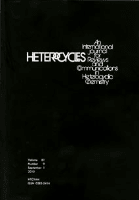
HETEROCYCLES
Catalyzing Progress in Pharmacology and ChemistryHETEROCYCLES, published by the Japan Institute of Heterocyclic Chemistry, stands as a pivotal journal within the fields of Analytical Chemistry, Organic Chemistry, and Pharmacology. With its ISSN 0385-5414 and E-ISSN 1881-0942, HETEROCYCLES has been a respected platform for scholarly work since its establishment in 1983, featuring innovative research up until 2022. While currently not open access, the journal is renowned for its rigorous peer-review process, ensuring the dissemination of high-quality research. Despite its Q4 ranking in the 2023 quartiles for its categories, it plays a crucial role in bridging gaps in knowledge and advancing the discourse on heterocyclic compounds, which are vital in drug discovery and development. Researchers, professionals, and students who are engaged in chemistry and pharmacology will find HETEROCYCLES an essential source of cutting-edge studies, insights, and an opportunity to contribute to the evolving landscape of these scientific fields.
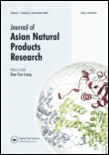
JOURNAL OF ASIAN NATURAL PRODUCTS RESEARCH
Exploring the Essence of Asian Natural InnovationsJOURNAL OF ASIAN NATURAL PRODUCTS RESEARCH is a prestigious publication in the field of natural products, focusing on valuable research spanning analytical chemistry, pharmacology, and complementary medicine. Published by Taylor & Francis Ltd in the United Kingdom, this journal has established itself as a key resource for academics and professionals seeking to explore advancements in drug discovery and organic chemistry. With a converged publication timeline from 1998 to 2024, the journal boasts several commendable category quartiles as of 2023, reflecting its robust standing in the research community: Q2 in Complementary and Alternative Medicine, Q3 in multiple domains including Analytical Chemistry and Organic Chemistry, and Q4 in Molecular Medicine. Although it currently does not offer open access, the journal remains a valuable compendium for empirical research and innovative studies in areas such as pharmacology and medicinal chemistry. Researchers, professionals, and students alike will find the JOURNAL OF ASIAN NATURAL PRODUCTS RESEARCH to be an essential platform for sharing groundbreaking findings and fostering collaborations that lead to significant advancements in science and health.
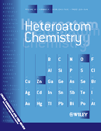
HETEROATOM CHEMISTRY
Unlocking the Potential of Heteroatoms in Organic ChemistryHeteroatom Chemistry is a prominent open-access journal dedicated to advancing the field of heteroatom chemistry, with a particular focus on the chemistry of elements other than carbon in organic compounds. Published by Wiley-Hindawi, this journal provides researchers, professionals, and students with a platform to disseminate and access novel research findings related to the synthesis, properties, and applications of heteroatom-containing compounds. Since its inception in 1990 and gaining open access status in 2019, the journal has fostered academic collaboration and innovation throughout its converged years, although it currently holds a category quartile ranking of Q4 in Chemistry (miscellaneous) and ranks #319 out of 408 in general chemistry within Scopus. With its commitment to high-quality research and broad accessibility, Heteroatom Chemistry is poised to be an essential resource for anyone looking to explore the rich and varied applications of heteroatom chemistry in diverse scientific fields.
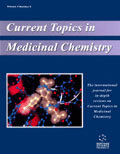
CURRENT TOPICS IN MEDICINAL CHEMISTRY
Fostering Collaboration in Drug DevelopmentCURRENT TOPICS IN MEDICINAL CHEMISTRY is a prestigious journal published by Bentham Science Publishers Ltd, dedicated to advancing the field of medicinal chemistry through the dissemination of high-quality research from 2001 to 2024. With an ISSN of 1568-0266 and an E-ISSN of 1873-4294, this journal is recognized for its significant contributions, as evidenced by its Scopus ranking in the 63rd percentile in the category of Drug Discovery, specifically at position #58 out of 157. Currently placed in Quartile 3 within Drug Discovery and Quartile 2 in miscellaneous medicine as of 2023, it serves as an essential resource for researchers, professionals, and students interested in the latest developments, methodologies, and applications in medicinal chemistry. The journal aims to foster collaboration and innovation by featuring original research articles, reviews, and brief communications that address current and emerging challenges in the discipline. Although it is not an open access platform, the journal's rich content is indispensable for those striving to enhance therapeutic strategies and drug development processes.

BIOORGANIC & MEDICINAL CHEMISTRY LETTERS
Connecting disciplines for impactful chemical research.BIOORGANIC & MEDICINAL CHEMISTRY LETTERS, published by PERGAMON-ELSEVIER SCIENCE LTD, is a leading journal in the fields of biochemistry, drug discovery, and medicinal chemistry, designed to disseminate significant advances in these disciplines. Established in 1991, the journal spans various important categories, including Organic Chemistry and Pharmaceutical Science, with its 2023 Scimago Journal Rank placing it at Q2 in Organic Chemistry and Q3 in several other relevant fields. Though not an open-access publication, it provides invaluable insights into contemporary research and innovative methodologies, appealing to researchers, professionals, and students alike. The journal's commitment to quality and relevance makes it a vital resource for those aiming to stay at the forefront of bioorganic and medicinal chemistry developments. For more information, please visit the journal's website as it remains a critical platform for scholarly exchange, particularly for those engaged in interdisciplinary research.
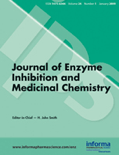
JOURNAL OF ENZYME INHIBITION AND MEDICINAL CHEMISTRY
Advancing Medicinal Chemistry for TomorrowJOURNAL OF ENZYME INHIBITION AND MEDICINAL CHEMISTRY, published by Taylor & Francis Ltd, is a premier open-access journal that has been at the forefront of research in the field of medicinal chemistry since its inception in 1985. With an ISSN of 1475-6366 and an E-ISSN of 1475-6374, this journal boasts a prestigious reputation reflected in its impressive Q1 rankings across critical categories such as Drug Discovery and Pharmacology as of 2023. Situated in the United Kingdom, it plays a vital role in disseminating high-quality research that addresses the burgeoning needs of drug discovery and enzyme inhibition methodologies. The journal supports full open access, providing a platform for researchers, professionals, and students to share significant findings and innovations widely. With a robust impact factor, the JOURNAL OF ENZYME INHIBITION AND MEDICINAL CHEMISTRY is indispensable for any academic or professional involved in the pharmacological sciences, offering an unparalleled insight into the latest advancements in therapeutic strategies and drug development.